How Invisalign Can Increase Teens’ Confidence

While many teenagers need orthodontic care, some don’t like how traditional braces make them look or feel. With advances in modern technology and appliances that have been developed, teenagers have more options than ever to straighten their teeth without having to lose their confidence. Invisalign Teen offers the same benefits as traditional braces, but with the ability to use a clear, removable aligner. While nearly undetectable, teenagers will be able to get straight teeth without anyone knowing. Learn how Invisalign works and how your teenager can benefit from its groundbreaking system!
What Is Invisalign Teen?
Most teens will need orthodontic care, but many don’t like the look of traditional braces. Luckily, modern advances in orthodontic technology have created other options for them, such as Invisalign Teen, that allows kids to get straight teeth in one of the most discreet ways possible. Invisalign Teen eliminates the need for metal braces and brackets by replacing them with clear, removable aligners. Clear aligners work just as effectively as traditional braces but without the self-consciousness that metal braces typically bring. Before treatment begins, however, your teen will need an examination by their orthodontist and have diagnostic X-rays and impressions (molds) taken of their teeth. Crowded teeth and/or wisdom teeth may need to be removed before treatment begins so that the aligners can fit properly in the mouth. The orthodontist will then create a set of aligners that your child will wear, one after another, for the space of one to two years. These aligners will straighten their teeth over time, and each aligner will be replaced with another one as teeth begin shifting into proper alignment. Most patients will be required to wear their aligners anywhere from 20-22 hours per day, so your teen will need to be careful and consistent during their time with Invisalign.
Invisalign Teen offers many benefits other than invisible treatment. With Invisalign, your teen won’t have to sacrifice their favorite foods that tend to get stuck in traditional braces; all they need to do is remove the aligner to eat and drink, and they’re good to go. Your kid will also be able to continue playing the sports and activities that they love, and they’ll have less emergency visits since there are no wires or brackets that can break. Invisalign allows kids to use a mouthguard when playing sports and continue playing their instrument because it is removable. With Invisalign, your child will have newfound freedom that other orthodontic treatment can’t provide.
Taking Care of Invisalign Aligners
As with any other orthodontic appliance, your child will need to take strict care of their Invisalign aligners to keep them clean and free from damage. After they remove their aligner to eat or drink, it’s important that they brush their teeth before putting the aligner back in to prevent bacteria from building up on their teeth, which can lead to tooth decay. Additionally, your teen needs to brush their aligner each night before bed to keep them fresh and clean. Your teen will most likely be wearing their aligner for one to two weeks at a time, with a checkup every six to eight weeks to pick up their new aligner, so it’s essential that they keep their aligners in a safe place during that time. Aligners can break when dropped or can be damaged by pets or little siblings, so proper storage whenever they’re not being used will keep any accidents from happening.
Importance of Good Oral Hygiene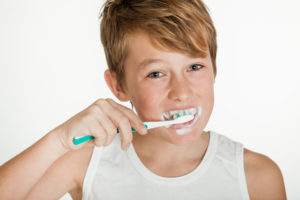
Having a good oral hygiene regimen will protect your child’s teeth from disease and keep their treatment plan on track. If teeth aren’t taken care of, orthodontic care can be slowed down as the orthodontist will have to address their cavities or tooth decay before treatment can continue. Brushing and flossing are essential before, during and after orthodontic care to keep teeth healthy and strong. Make sure that your teen is brushing with a fluoride toothpaste to strengthen their tooth enamel. Consistent flossing will also keep teeth decay-free by removing food particles that can get stuck and allow bacteria to grow. Additionally, using a fluoride mouthwash can aid brushing and flossing by adding the extra punch that teeth need to fight plaque and decay.
Scheduling A Consultation
If your teen would benefit from Invisalign, call Belmar Orthodontics today at (303) 225-9016! Our team of dedicated professionals is experienced with fitting Invisalign Teen and helping your child feel comfortable and satisfied during orthodontic treatment. Call today to begin your teen’s treatment for a beautiful, confident smile!
Perks of Lingual Braces

As modern technology has improved the tools and appliances that are now used in orthodontic offices, there are more options than ever for patients to get straighter teeth without the look of traditional metal braces. Lingual braces are an ideal option for patients who want orthodontic care but in the most discreet way possible. By using a hidden apparatus on the tongue-side of your teeth, you can get straight, beautiful teeth without sacrificing your confidence. Find out what other perks lingual braces have and what treatment looks like with this guide!
What Are Lingual Braces?
Braces have come a long way since they were first invented, and patients have more options than ever to get the straight teeth they want without sacrificing their confidence. Traditionally, metal braces were the most common type of orthodontic appliance used but were bulky and aesthetically not very pleasing. With the modern technology that has been developed during the last few decades, one type of braces in particular has become more and more common. Lingual braces are an alternative to traditional metal braces and provide utmost discretion as they are almost completely hidden. Unlike traditional braces whose brackets are attached to the front of the teeth, lingual braces are attached to the back side (tongue-side) of teeth, making them practically hidden from view. Fortunately, lingual braces can provide the same results as traditional braces but in a manner that is nearly undetectable. These braces are particularly helpful for patients, especially teenagers, who think braces are unattractive or distracting. Now, more than ever, patients can receive the orthodontic treatment they need without putting it off for aesthetic reasons.
How Lingual Braces Differ From Other Options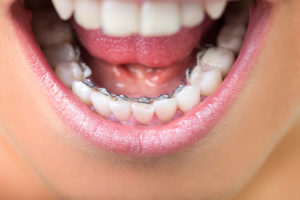
While the obvious advantage of choosing lingual braces over other orthodontic appliances deals with the invisibility of the braces themselves, there are other reasons why lingual braces might be the best option for you. Since their invention in the 1980s, lingual braces have slowly gained recognition as a viable option for orthodontic treatment. In fact, very few dentists even offer this technique because special training is needed to perform it. You will still need X-rays, molds and impressions of your teeth to begin treatment, just like you would when getting any other orthodontic treatment. The process is relatively easy to install them, as the brackets are glued to the lingual side of the teeth with a wire and elastics (if needed) to help move the teeth into position. Lingual braces are always on during treatment, so they are constantly shifting your teeth into the correct position without you or others noticing. A similar treatment to lingual braces is called Invisalign, which uses a removable aligner to straighten teeth. Invisalign is a popular option because the aligner is clear and removable so most people don’t notice it’s there, but not everyone is eligible for Invisalign. While Invisalign is a great option, lingual braces tend to be more helpful for patients with specific concerns. Athletes benefit greatly from lingual braces as it helps prevent mouth injuries since the brackets aren’t on the front of the teeth. Musicians, like those who play a wind instrument (flute, trumpet, clarinet, etc.), are also common wearers of lingual braces as they tend to not get in the way as much when playing. Lastly, those patients who don’t qualify for Invisalign typically choose lingual braces as it is the second most discreet option available. Depending on your needs and your orthodontist’s recommendation, you can choose which option you would like to get the beautiful teeth that you want, in the way that you want.
How To Begin Treatment
As mentioned previously, you must be eligible for certain types of orthodontic treatment to receive them. If you are interested in lingual braces, you will first need to visit with your orthodontist to have a consultation and evaluation to determine whether lingual braces are your best option. If you are a candidate, you will have impressions taken of your teeth which will be sent to a lab to create your custom-made brackets and wires. Afterwards, the brackets and wires will be bonded to your teeth to begin treatment. It is important to note that while lingual braces are a great way to keep your treatment unnoticed by others, the braces themselves are more difficult to clean since you can’t see them. For this reason, it is extremely important to clean your teeth thoroughly each day because it will be easier for food to get stuck and bacteria to grow in areas that are hard to see or reach. Another reason why it is important to consult with your orthodontist before choosing lingual braces is the price. Traditional braces typically range from $3,000-7,000, but lingual braces can be anywhere from $8,000-10,000. For patients who are on a budget, this is something to consider as you are in the decision-making process. Check with your dental insurance to see how much they can cover for orthodontic treatment. While many plans don’t offer coverage for adults over 18, many do partially cover children under 18. How much coverage will depend on your provider, so make sure to contact your insurance company for figures and amounts before you or your child begins treatment.
Get Started Today
At Belmar Orthodontics, our team is certified and trained for installing lingual braces. We are ready to help you and your family get the smile you deserve in a way that is most comfortable for you. For a consultation about lingual braces or more information about orthodontic treatment options, call our office at (303) 225-9016. Your journey to a healthier smile starts today, so call now!
Space Maintainers and Permanent Teeth
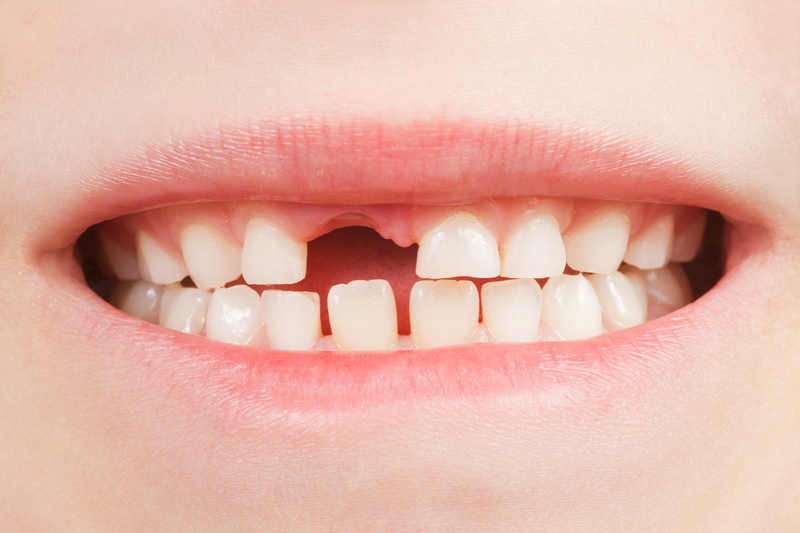
Whenever a child loses a tooth prematurely, a space maintainer may be needed to keep the space open so the permanent tooth can grow in correctly. Losing a baby tooth is a natural occurrence, but some baby teeth must be extracted due to dental decay. A space maintainer is a custom-made appliance that helps permanent teeth grow in correctly and prevent future oral health complications. If you are worried about the gap in between your child’s teeth, learn how a space maintainer can keep your child’s teeth straight and allow for proper tooth development!
Why Baby Teeth Fall Out Prematurely
Most children get their first full set of baby teeth by the age of 3, and these help them eat their food while serving as placeholders for their future permanent teeth. Occasionally, baby teeth are lost prematurely or permanent teeth erupt later than they should, so space maintainers have become a popular way to support the child’s mouth until the gaps are filled with permanent teeth. There are many reasons why children lose their baby teeth earlier than expected. For one, some experience trauma to the mouth, such as tripping or getting hit in the mouth with some object. Others lose teeth due to “baby bottle decay,” which occurs whenever a child falls asleep at either breast or bottle, or walks around with a bottle for large amounts of time. The sugar content in the milk causes enamel to decay and cavities to appear, which can lead to premature tooth loss. Genetic influences can also affect whether permanent teeth develop or not, which can leave gaps in the mouth. Although rare, some children suffer from oral infections that are severe enough to cause tooth loss, but this is not as common as an injury or baby bottle decay. Even though losing baby teeth prematurely is not inherently bad, the consequences of not having a tooth in the space where a permanent tooth will eventually erupt can cause some complications with malocclusion that will need orthodontic care later on. Space maintainers provide the mouth with the proper space for permanent teeth to erupt into while ensuring that other teeth do not crowd that area until the tooth develops.
How Space Maintainers Help
Space maintainers basically “hold space” for permanent teeth once a baby tooth has been lost prematurely. When adult teeth are ready to come into the mouth, there may not be enough room because of the lost space. For this reason, dentists recommend space maintainers to hold open any spaces left by the missing tooth. These devices are typically made of acrylic, with loops and bands made of steel wire to hold them in position. Space maintainers ensure that your child develops their permanent teeth in the right locations while giving support to the surrounding teeth. Teeth are notorious for moving or becoming loose without the support of surrounding teeth, so space maintainers also help other teeth stay in their proper places and not move into the gaps where the missing teeth were once located. Space maintainers aren’t for everyone, though. If your child loses a baby tooth shortly before a permanent tooth is expected to develop, a space maintainer isn’t necessary. For those patients whose permanent teeth won’t be developing for an extended amount of time, space maintainers come in handy to guide those teeth into proper alignment whenever they do erupt.
Type of Appliances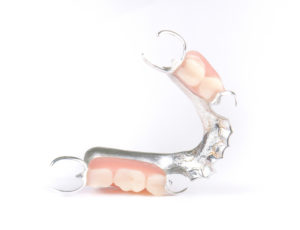
For those who choose space maintainers, they come in two different options: removable and fixed. Removable devices are made of acrylic and use artificial teeth to hold open the spaces. These are ideal for older children who are capable of removing and cleaning them on their own. For children with several missing teeth, partial dentures are another option to maintain the spaces in the mouth. Fixed maintainers are attached with dental cement to the teeth beside the gap. These are helpful for young children or those who have lost back teeth. Fixed retainers can be fitted on the upper or lower jaw to maintain space for front or back teeth. The device that your child will be given will depend upon the number and location of missing teeth in their mouth, but age is also considered, as well.
There are quite a few different options to choose from if your dentist recommends a fixed maintainer for your child. Some of the most popular options include:
- Lingual holding arch: Used to maintain space for lower back teeth on both sides.
- Band-and-loop device: Recommended when one or more baby molars are lost in one dental arch. Stainless steel wire that is held in place by orthodontic bands that allows the permanent tooth to erupt without blocking it.
- Distal shoe appliance: Fitted over the baby first molar and maintains the space for the permanent molar once the tooth is lost.
- Transpalatal arch: Fitted on the upper jaw to preserve space on both sides of the dental arch. Held in place by wire fastened around the surrounding teeth.
Each of these devices are custom-made to fit to your child’s mouth. The dentist will take impressions of your child’s teeth, then send that impression to the dental laboratory to create the appliance.
Advantages of Child Orthodontics
With the modern technology and tools that are available to dental patients, child orthodontics has become more popular and necessary to maintain the oral health of young kids. Especially if your child loses a baby tooth prematurely, visiting with an orthodontist early on can help detect hidden dental issues, observe the progress of incoming teeth, decrease the risk for permanent tooth extractions and guide incoming teeth into their ideal positions.
If your child is in need of a space maintainer or is having issues with crowded teeth, call Belmar Orthodontics at (303) 225-9016! Our team is dedicated to your oral health and is ready to help your family get the beautiful smile that they deserve!
Orthodontic Appliances Your Child Might Need

As orthodontic technology has improved throughout the years, so have the different appliances that are used to treat children with braces. Depending on their jaw and bone structure, your child may need an orthodontic device to help guide their teeth and jaw into proper alignment. These orthodontic appliances are used to maintain space in the mouth and allow for proper tooth eruption and movement. Find out what types of appliances are available and which is best for your child’s needs through these tips!
Benefits of Child Orthodontics
Many, if not most, dental patients will receive some form of orthodontic treatment during their lifetime. Even if one’s teeth doesn’t show any kind of orthodontic issues, it is advantageous that patients, especially children, visit with an orthodontist to maintain good oral health. The American Association of Orthodontics recommends that children have their first orthodontic visit between the ages of 7 and 8 to prevent the progression of any orthodontic issues that may already be developing. Orthodontic treatment can lead to healthy, beautiful smiles at any age, but is most beneficial when completed at an earlier age. Some benefits of visiting the orthodontist early on include observing the progress of incoming teeth, reducing the risk of impacted teeth, and monitoring facial and jaw development. Early orthodontic evaluations can discover hidden dental issues and decrease the risk for permanent teeth extractions, as well. Early detection of any dental issue is vital in maintaining good oral health for patients of all ages, and should be a goal that all children should obtain from an early age.
Types of Appliances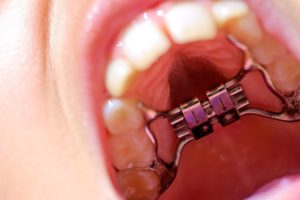
Whenever patients think of “orthodontia,” they typically think of braces. For young patients, braces are common orthodontic appliances that they can receive to straighten their teeth and correct any dental issues. Child orthodontics includes other appliances than just braces, though, and these appliances fulfill an important function in your child’s overall treatment. Orthodontic appliances change the way your child’s mouth works by correcting certain bone problems. Headgear, for example, guides the jaw into the proper direction by holding the upper jaw until the lower jaw can catch up with it. Retainers are other useful tools that keep teeth in the correct position after braces are removed, and most children will use some type of retainer during or after their treatment.
There are other orthodontic appliances that aren’t as well known but are used quite often in child orthodontics. The Nance “Button” is one of those appliances that uses a holding arch to maintain space in the mouth for children who have lost their baby teeth and are waiting for permanent teeth to grow in. If baby teeth are lost prematurely, the first molars might move forward into an incorrect position as they erupt because there is nothing holding them back. The Nance is an acrylic plate (the button) that covers a section of the palate with two metal bands around the back teeth to hold them into position until permanent teeth develop. This process helps maintain the proper space for permanent teeth to grow into. Another less-known appliance is the lower lingual holding arch, which does the same thing as the Nance but for the lower teeth. Two metal bands are cemented to the lower molars, joined by a U-shaped bar that rests behind the lower teeth. This keeps the back teeth from moving forward and maintains the space needed for future permanent teeth to erupt. Lastly, twin blocks are used to correct misalignments in the jaw that cause your child’s top teeth to stick out in front of the lower teeth further than normal. The blocks consist of two plates, one on the upper teeth and the other on the lower. These work together to bring your child’s lower jaw forward into the correct position, but is most successful when inserted while your child’s bones are still growing. They are the fastest-working appliances, and create quick results. Any of these appliances can be used in your child’s orthodontic treatment, so if you have questions about how they function or which one would be best to implement, make sure to ask your orthodontist.
What To Expect At The First Appointment
Most adult teeth erupt between the ages of 6 and 12, so whenever your child’s first permanent molars begin developing, the dentist will need to evaluate them to see how they work together. This process is called a “bite check,” and it helps orthodontists determine in what stage your child’s teeth are and what their treatment will require. The dentist will then decide which type of appliance would work best for your child and what instructions they will need to follow to get the best results out of their treatment. When using an orthodontic appliance, good oral hygiene will be necessary to prevent plaque buildup and other dental complications that could extend your child’s treatment time. Having your child brush and floss their teeth every day, along with cleaning whichever orthodontic appliance they’re given, will ensure that they get the healthiest and fastest treatment possible.
If your child is due for an orthodontic visit, or if they’re experiencing any of the orthodontic issues that we’ve discussed, call Belmar Orthodontics at (303) 225-9016 for a consultation to improve their oral health. Our dedicated team is ready to help you create a plan for your child to get them the smile that they deserve!
